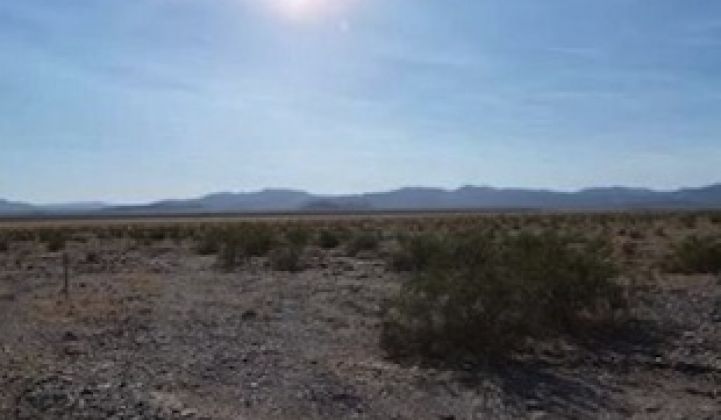A peace treaty between big solar and Riverside County -- where the federal government has opened up nearly 150,000 acres of public land for solar development -- is signed, sealed and delivered [PDF]. Now we’ll see if it translates into a revival of back-burnered solar power project plans.
Solar developers and the California county, which borders Orange County on the west and stretches some 200 miles east to Arizona, had been at odds for more than a year over the county’s plan to charge $450 per acre used to produce power. Every year.
That could add up to a lot of money for a project like the 550-megawatt Desert Sunlight PV plant that will cover more than 4,000 acres near Desert Center. (And according to K. Kaufman in the Desert Sun newspaper, Desert Sunlight already pays Riverside county an annual $600,000 franchise fee.)
Solar developers brought a suit to stop imposition of the fee. They labeled it a “Sun Tax,” which was more than glib; it was something of a legal argument. You see, a “tax” would have to be voter-approved, while a “fee” could be imposed by the county board.
In the end, the two sides worked out a negotiated settlement: the amount of the fee/tax will be $150 per acre, and the Independent Energy Producers Association and the Large-Scale Solar Association, which had brought the suit, gives up the right to take the County to court over the issue.
The question now is if settling the issue will kick-start solar development in the desert, which hasn’t been moving along nearly as quickly as forecast a few years ago. As Kaufman reported, just Desert Sunlight (which is being built by First Solar but is owned by NextEra Energy, GE and Sumitomo) and NextEra’s 250-megawatt Genesis projects are currently underway. One big project to watch could be NextEra’s McCoy PV plant, about 13 miles northwest of Blythe. The federal government rubber-stamped the project in March. Approved at up to 750 megawatts, it has just a 250-megawatt power purchase agreement, but NextEra believes it could begin construction next year.
***
Editor's note: This article is reposted in its original form from EarthTechling. Author credit goes to Pete Danko.



